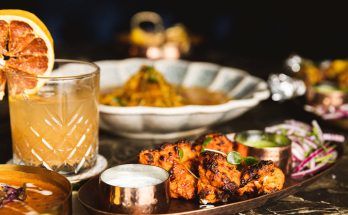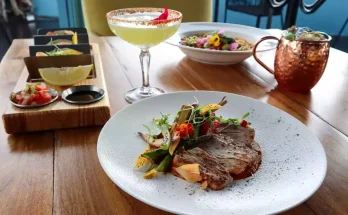The ubiquitous minion cake represents far more than a whimsical dessert choice; it serves as a lens for examining the commodification of childhood, globalisation of entertainment culture, and transformation of celebration rituals in late capitalism. What appears as innocent yellow confectionery embodies corporate influence, parental anxiety, and cultural homogenisation that demands examination.
The Historical Context of Character-Driven Consumption
To understand the minion cake phenomenon, we must acknowledge its position within character merchandising that began during the twentieth century. Disney pioneered the transformation of animated characters into consumer products, establishing a template that entertainment conglomerates have refined and amplified.
The minion, originally conceived as comic relief, has evolved into a global brand worth billions, infiltrating every consumer category. This transformation reflects the “entertainmentisation” of everyday life, where commercial entertainment properties become integral to personal identity formation.
Key historical developments include:
- Post-war expansion of character licensing
- Rise of global media conglomerates
- Integration of marketing into children’s entertainment
- Emergence of experiential consumption culture
The Psychology of Parental Performance
The decision to commission a minion cake rarely stems from genuine child preference alone. Instead, it represents complex parental psychology operating within commercialised childhood culture.
“Minions are one of the many favourite characters of children. It excites the children when they see these cute little characters, yet this excitement reflects sophisticated marketing manipulation rather than organic preference.
Psychological factors driving demand include:
- Parental anxiety about providing adequate childhood experiences
- Social media validation requirements for celebration documentation
- Projection of parents’ childhood deprivations onto current planning
- Competitive pressure within an elaborate celebration culture
- Vulnerability to marketing, creating artificial emotional attachment
The Globalisation of Aesthetic Uniformity
Perhaps most troubling is how minion cakes represent global standardisation of childhood aesthetics. Children from Singapore to Stockholm now share identical visual references, celebrating birthdays with remarkably similar confectionery. This cultural convergence reflects the unprecedented reach of transnational entertainment corporations in shaping local customs.
“A banana-rific centrepiece your celebration needs! Featuring a delightful minion donning a party hat, this cake is a ‘despicable’ delight, exemplifying globalised marketing language that accompanies this aesthetic uniformity. The playful terminology masks cultural homogenisation that erodes local celebration traditions.
This standardisation process operates through:
- Coordinated global marketing campaigns
- Standardised licensing agreements
- International distribution networks
- Social media amplification
The Economics of Engineered Childhood
The minion cake industry reveals a sophisticated economic apparatus underlying contemporary childhood experiences. What appears as spontaneous consumer choice results from carefully orchestrated market creation.
“Introducing the NEW 3D Despicable Me 4 Minions Cake! With a charming Minions in an edible icing suit” demonstrates how commercial imperatives drive technical innovation for corporate brand promotion.
Economic components include:
- Entertainment studios coordinating global marketing
- Licensing agencies managing intellectual property
- Specialised bakeries developing character reproduction expertise
- Social media influencers amplifying demand
- Supply chain networks supporting character-themed ingredients
Technical Mastery in Service of Corporate Brands
The remarkable technical sophistication evident in contemporary minion cake production deserves acknowledgement, even as we critique its purposes. Skilled artisans employ advanced techniques, including structural engineering, food chemistry, and three-dimensional sculpting, to create edible masterpieces.
“This cake is frosted with blue, yellow and white smooth buttercream, covered with yummy white chocolate ganache drip, comes with a set of 4 figurines, fondant stars and rainbow sprinkles” illustrates technical complexity now considered standard. This expertise represents genuine artistic achievement, even when deployed for corporate marketing.
Advanced techniques include:
- Precision temperature control systems
- Computer-aided design software
- Specialised preservation technologies
- Professional sculpture training
The Minion Drip Cake Variation: Innovation Within Constraints
A particularly revealing development is the emergence of minion drip cake variations, which reconcile contemporary aesthetic trends with established character branding requirements. These hybrid designs demonstrate how creative professionals navigate tension between artistic expression and commercial constraints.
The drip cake variation represents more than aesthetic innovation; it embodies adaptive strategies employed by creative workers operating within rigid commercial frameworks. By incorporating trendy design elements whilst maintaining recognisable character features, cake designers create space for expression within corporate-dominated markets.
This adaptation process reveals both human creativity and resilience and the pervasive influence of commercial considerations on artistic production. Even seemingly minor variations like drip patterns become sites of negotiation between personal vision and market demands.
The Social Cost of Commodified Celebration
Beyond individual economic impacts, the minion cake phenomenon contributes to broader social stratification based on celebration expenditure. “Bring the fun of Minions to your celebration with our Minion Character Cake, perfect for any fan’s birthday or themed event”, suggests universal accessibility, yet pricing structures ensure elaborate designs remain luxury items.
Social implications include:
- Class distinction through conspicuous consumption
- Implicit pressure on families unable to afford elaborate cakes
- Psychological pressure on children to align preferences with commercial options
- Transformation of childhood celebrations into social competition
- Learning to express identity through consumption
Resistance and Alternative Possibilities
Despite overwhelming commercial pressure, resistance emerges through alternative celebration approaches prioritising creativity over consumption. Some families develop homemade alternatives satisfying children’s character interests whilst avoiding commercial participation.
Alternative possibilities include:
- Community celebration support programmes
- Educational initiatives teaching cake decoration
- Local cultural preservation projects
- Artistic education programmes redirecting expertise
- Grassroots movements promoting authentic celebration rituals
Conclusion
The phenomenon of character-themed confectionery reflects deeper transformations in how commercial entertainment shapes personal experience and social ritual. Whilst families navigate these pressures as best they can, broader implications demand serious consideration of how corporate influence penetrates intimate aspects of family life.
Understanding the minion cake as more than a dessert choice, recognising it as a product of sophisticated commercial engineering, enables more conscious participation in contemporary consumer culture. Only through critical awareness can we begin to reclaim celebration rituals from corporate control and restore authentic meaning to enjoying a minion cake.




